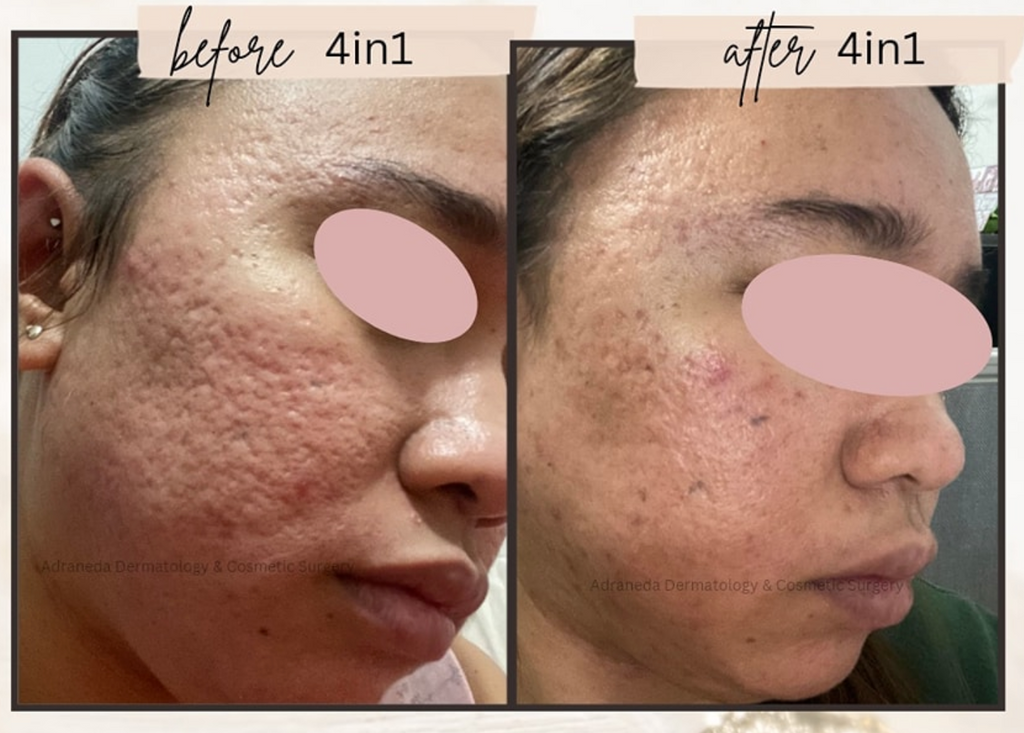Ideal Acne Scars Treatment: Advanced Techniques for Smoother Skin
Wiki Article
Discovering Skin Problem: Treating and determining Acne Scars for Healthier Skin
Acne scars represent a significant concern for people seeking to keep healthy skin, as they can affect both appearance and self-esteem. Recognizing the numerous kinds of scars, from atrophic to hypertrophic, is crucial for determining ideal treatment options.Recognizing Acne Scars

The body's all-natural healing procedure can cause either atrophic marks, which look like anxieties in the skin, or hypertrophic scars, which are raised and result from overproduction of collagen. Furthermore, the psychological toll of acne scars must not be ignored; several individuals report feelings of humiliation, anxiousness, and reduced self-esteem. This psychological worry can influence social communications and overall quality of life.
Dealing with acne scars requires an extensive understanding of their formation and influence. Recognition of the possibility for lasting effects connected with without treatment scars can encourage individuals to look for appropriate treatments. Early treatment and effective administration approaches can substantially improve skin appearance and enhance emotional resilience, emphasizing the value of comprehending the complexities surrounding acne scars.
Sorts Of Acne Marks
Acne scars can be categorized into unique kinds, each showing special qualities and calling for certain therapy methods. acne scars. The key kinds of acne scars consist of atrophic, hypertrophic, and keloid scars
Hypertrophic scars, on the other hand, are raised above the skin degree and are the outcome of extreme collagen manufacturing during the healing procedure. They usually stay within the borders of the initial acne sore. Keloid marks are similar yet expand past the original injury site, developing bigger, elevated locations that can be itchy or excruciating.
Comprehending these kinds of marks is crucial for picking appropriate treatment options. Various marks might react far better to certain treatments, such as laser treatments, fillers, or surgical treatments, emphasizing the value of a tailored strategy to acne mark administration.
Recognizing Your Marks
Acne scars generally fall into two groups: hypertrophic and atrophic scars. These can better be identified into ice-pick marks, boxcar scars, and rolling scars, each displaying distinct features and calling for different methods for analysis.Hypertrophic marks, on the various other hand, are elevated and happen due to too much collagen production throughout the recovery process. Recognizing the details functions of your scars-- see this page such as size, deepness, and appearance-- is essential for appropriate identification (acne treatment for sensitive skin). In addition, think about the distribution of scars across your skin, as this can show the extent and duration of the acne condition
Engaging with a dermatologist can provide valuable understandings into the nature of your marks, aiding in the distinction between different kinds. A detailed understanding of your marks will inevitably bring about a more tailored and effective therapy plan, guaranteeing a more clear and much healthier skin tone.
Therapy Choices Offered
Determining the specific kind of acne scars present on your skin lays the foundation for checking out efficient therapy alternatives. Usual sorts of acne marks consist of atrophic (clinically depressed), hypertrophic (elevated), and post-inflammatory erythema.For atrophic marks, alternatives such as chemical peels, microneedling, and laser resurfacing are extensively used. Chemical peels use acids to eliminate the outer layer of skin, advertising new cell development.
Hypertrophic marks can be treated with corticosteroid injections to squash the mark or laser therapy to reduce redness and improve look. Silicone gel sheets and stress dressings might likewise assist in taking care of elevated marks.
Additionally, facial fillers can momentarily fill out depressions from atrophic my response marks, while medical excision might be appropriate for extreme instances. Each therapy alternative has its benefits and factors to consider, making it necessary to talk to a dermatologist. They can supply customized referrals based on the type and extent of your marks, as well as your skin kind and overall health and wellness.
Tips for Prevention
Efficient prevention techniques can dramatically lower the probability of establishing acne scars. Making use of non-comedogenic items helps protect against clogged up pores, which can aggravate acne.
Preventing need to pick or pop acne sores is important, as this can cause deeper skin damages and boost the danger of scarring. Instead, take into consideration making use of a chilly compress or over-the-counter therapies to reduce swelling and soreness.
Sunlight protection is an additional crucial aspect of avoidance; ultraviolet (UV) rays can dim scars and prevent the recovery procedure. Using a broad-spectrum sun block with at the very least SPF try this out 30 daily can protect the skin and promote also healing.
Last but not least, preserving a balanced diet abundant in minerals, anti-oxidants, and vitamins sustains skin health and wellness and recovery. Remaining hydrated and taking care of tension degrees can also play a considerable role in decreasing acne flare-ups. By implementing these approaches, people can considerably reduce their possibilities of developing acne scars.
Conclusion
Finally, understanding and identifying acne marks is vital for efficient therapy and achieving much healthier skin. Different types of acne marks, including hypertrophic and atrophic marks, demand specific interventions tailored to individual requirements. Therapy options array from chemical peels and microneedling to corticosteroid shots, highlighting the relevance of seeking advice from a skin specialist. Furthermore, taking on a mild skin care routine and securing the skin from UV exposure can substantially add to the avoidance of further scarring and overall skin health.The body's all-natural healing procedure can result in either atrophic marks, which appear as clinical depressions in the skin, or hypertrophic scars, which are increased and result from overflow of collagen. They are additional divided right into 3 subtypes: ice pick scars, boxcar marks, and rolling scars. Acne marks typically fall into 2 groups: hypertrophic and atrophic marks. These can even more be categorized into ice-pick scars, boxcar scars, and rolling marks, each showing unique attributes and requiring various approaches for evaluation.
Various types of acne marks, including hypertrophic and atrophic marks, necessitate specific treatments customized to private needs.
Report this wiki page